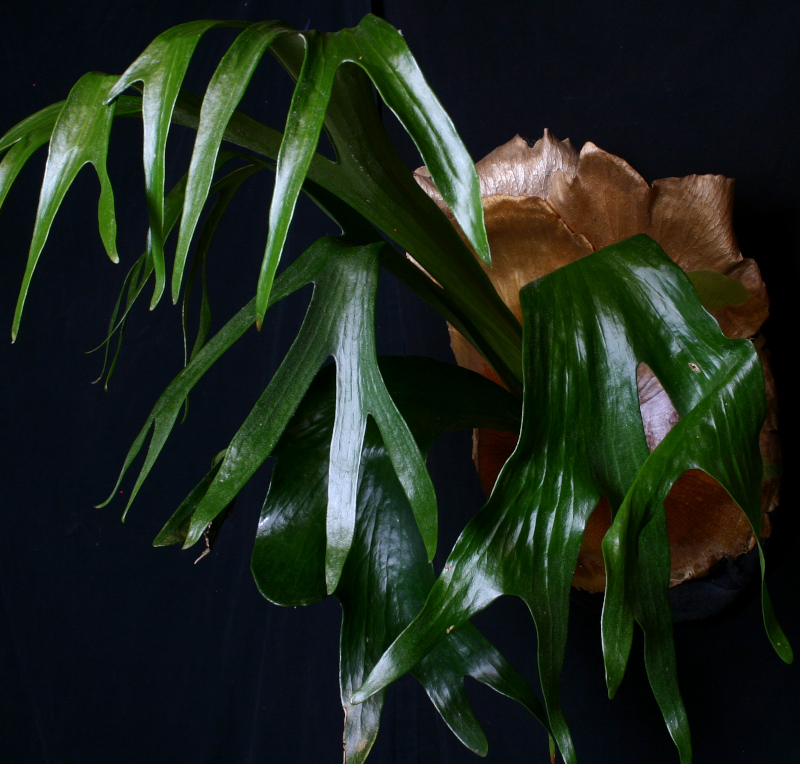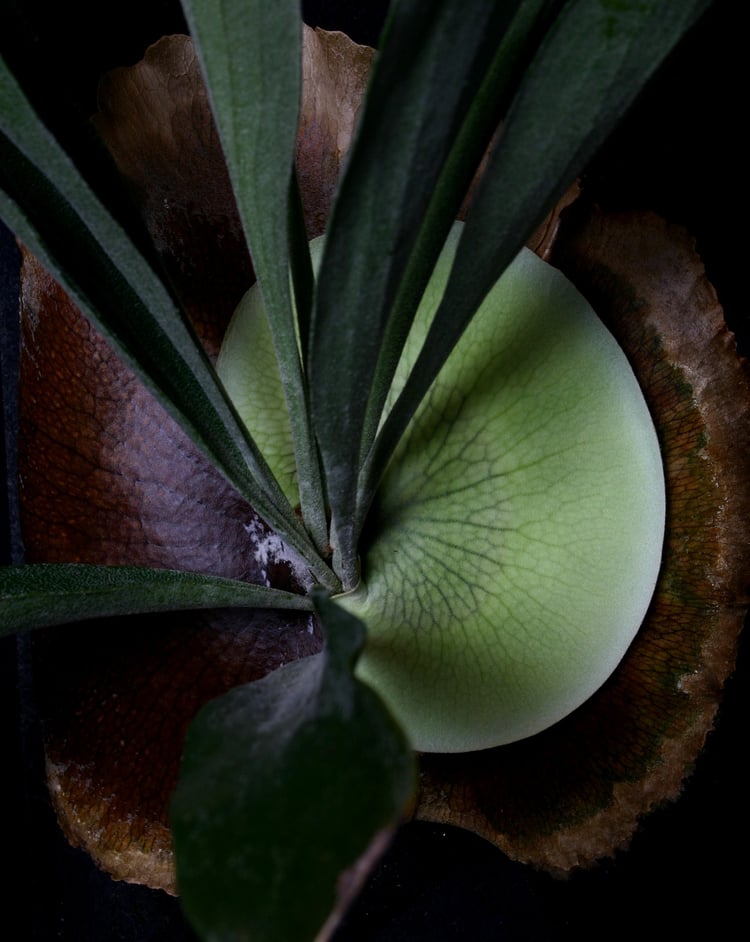
Staghorn Basics
Platycerium bifurcatum
Let me start with a list of caveats. I grow my staghorns in a big old house, with forced air heating in the winter. In the warmer months the staghorns go outdoors. I don't have a greenhouse. These conditions influence how I grow my staghorns and, critically, which species I grow. There are close to 20 species of staghorns native to tropical and subtropical forests around the world. Many of them grow in wet and humid places. The species I work with is P. bifurcatum. Bifucatum does well in the conditions I provide. It happens that bifurcatum is the most common staghorn, probably because it is easy to grow.
What I say here should only be taken as relating to conditions similar to mine and growing P. bifurcatum. If you live in temperate regions of the US with heated indoor winters then this method might be right for you.

